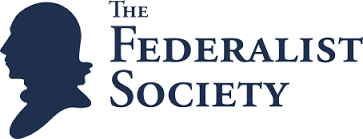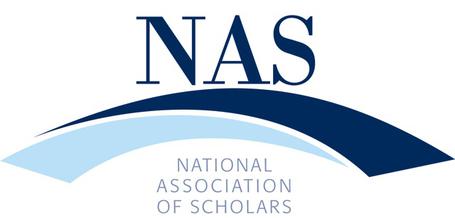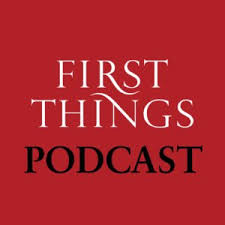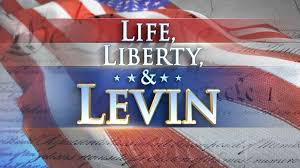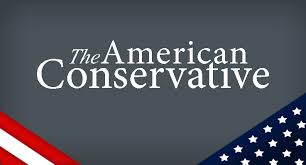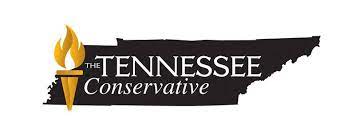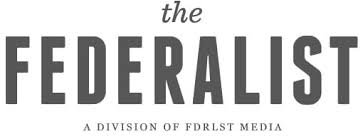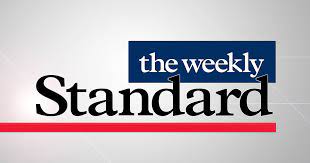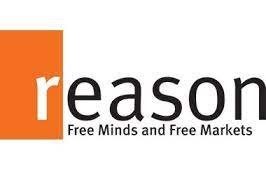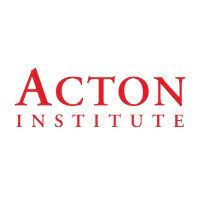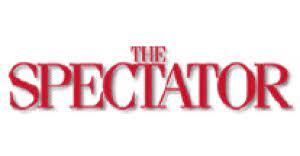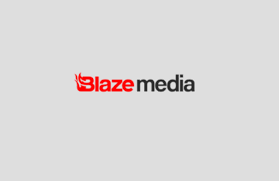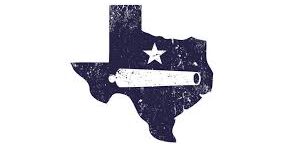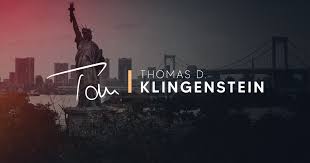How Did America’s Law Schools Become Lawless?
Ilya Shapiro did not “discover” the problem of wokeness in legal academia, which has been festering for years, but in 2022 the problem discovered him. His eye-opening account is a clarion call for reform.
This essay first appeared in Law & Liberty on February 18, 2025 (here). Thanks to Power Line, Real Clear Policy (here), Real Clear Education (here), the Michael Patrick Leahy radio show, the Ace of Spades HQ (here), Real Clear Books (here), and TaxProf Blog (here)!
Legal academia has been long overdue for a book-length critique, and Ilya Shapiro’s Lawless: The Miseducation of America’s Elites delivers—just in time for Trump 2.0.

A good deal of scholarly ink has been spilled exposing the absurd degree of wokeness and suppression of debate in higher education generally, but not so much regarding law schools in particular. With the exception of a few—now dated—volumes such as Walter Olson’s Schools for Misrule (2011) and Brian Tamanaha’s Failing Law Schools (2012), the rapidly-deteriorating state of legal education has been chronicled primarily in the blogosphere. Northwestern law professor John McGinnis has made important contributions to this nascent literature in essays for Law & Liberty, the Wall Street Journal,andCity Journal, as well as scholarly articles (including, ironically, for reasons that will be apparent shortly, one published in 2005 by the Georgetown Law Journal).
While many commentators focus on and monitor campus trends at our colleges and universities, few train their attention on the esoteric arcana of the nation’s law schools. After all, other than lawyers themselves (a self-interested guild leaning strongly to the left), who in the general public cares about the curriculum and pedagogy used in law school classes? The Federalist Society is the only national organization that provides any center-right ballast in the legal industry—a mandarin class (or clerisy) for whom law schools are the incubators (or social justice academies). As Shapiro points out, however, law schools produce our future judges, lawyers, prosecutors, law professors, legislators, and political leaders.
The left-wing capture of the legal academy matters far more than the shenanigans of, say, the Modern Language Association or the field of grievance studies. Large law firms already embrace the leftist orthodoxy of the legal culture, and devote their enormous “pro bono” resources accordingly. Unless corrected, the baleful trends in our law schools will only accelerate. Hence, Lawless addresses a neglected topic of enormous significance, and one hopes that it will provoke greater public attention to the dysfunction in legal academia.
Georgetown University—located in the most lopsidedly Democrat-voting city in America, Washington, D.C.–has become a front-runner in the higher education wokeness derby. The nation’s capital is the epicenter of the administrative state. Many students aspire to become part of the Swamp. It is appropriate, therefore, that Lawless was inspired by the shabby treatment Cato Institute veteran and acclaimed author Shapiro received by the Georgetown administration concerning an admittedly “inartful” tweet he sent in early 2022 on the eve of commencing employment as executive director of the Georgetown Center for the Constitution, headed by originalist Randy Barnett.
Shapiro’s sensible tweet bemoaned President Biden’s campaign promise to appoint only a black woman to replace Justice Stephen Breyer on the Supreme Court, instead of selecting the most qualified candidate aligned with a Democratic administration, whom Shapiro believed was D.C. Circuit Chief Judge Sri Srinivasan. The viral tweet, prompted by Breyer’s abrupt retirement announcement, ignited a firestorm of overwrought—and, one suspects, mainly performative—outrage by the administration, faculty, and students at Georgetown. Shapiro was falsely denounced as a racist and a sexist. (Biden ultimately nominated Ketanji Brown Jackson, who had barely served a year on the D.C. Circuit. Her inability to define the term “woman” at her confirmation hearing did not prevent her ascent to the Court; nor did it abate the furor over Shapiro’s comment.)
The cancel culture nearly snubbed out Shapiro’s tenure at Georgetown before he even started, notwithstanding Georgetown’s stated policy ostensibly protecting free speech and expression. So much for fostering robust debate on campus! After a four-month suspension, investigation, and public scolding, Shapiro was eventually allowed to assume his position, albeit under a cloud of controversy. The handwriting was on the wall. (At the fictional Faber College in the 1978 film Animal House, Dean Wormer would have called this “double secret probation.”) Shapiro chose instead to decamp to the Manhattan Institute, where he is now a senior fellow, rather than endure more “bizarro world” abuse from a woke institution. This was a wise decision.
Lawless is simultaneously an account of Shapiro’s inquisition and an exploration of the overall condition of America’s law schools. It is a shocking expose.
The ferocity of Georgetown’s overreaction to Shapiro’s innocuous tweet exemplifies the maladies that afflict legal academia, particularly at status-conscious schools striving to be perceived as “elite” institutions. The ingredients include: weak-willed leaders (such as Georgetown Law Dean William Treanor) who are easily cowed by noisy protests; overgrown administrative bureaucracies pandering to every passing DEI/identity politics fad; faculties dominated by leftist activists who espouse radical ideology masquerading as scholarship (such as critical race theory); a politicized curriculum brimming with woke courses; a radicalized student body containing many affirmative action admittees sporting chips on their shoulders; clinical programs promoting overtly social justice causes; and easily-weaponized campus policies prohibiting “harassment and discrimination,” which lack due process and are interpreted to protect hurt feelings caused by “microaggressions.”
Without resolute protection of free speech and responsible adult supervision—both currently lacking–these ingredients produce a fever swamp of far-left intolerance and Lord of the Flies-type mob behavior. In this toxic climate, conservative faculty face discipline (or worse) for simply expressing dissenting views. In the course of telling his own story, Shapiro catalogs similar (or worse) incidents involving Penn law professor Amy Wax, Ohio Northern law professor Scott Gerber, and many others whose unfortunate plights escaped news coverage. Conservative speakers—even prominent federal judges—are harassed, heckled, and shouted down by noisy activists at law school speaking events. Even left-wing law school deans (such as UC Berkeley’s Erwin Chemerinsky) are not immune from harassment by antisemitic students who denounce Jews (or “Zionists”) as “colonists” and “oppressors” supporting “apartheid” in the Middle East. This occurred at a private event in Chemerinsky’s own backyard!
The persecution of dissenters (and it is not hyperbole to use these words) extends to students; Shapiro discusses the notorious 2021 “trap house” incident at Yale Law School, in which a student member of the Federalist Society was threatened with potentially career-ending discipline for a light-hearted email invitation he sent for a Constitution Day celebration at his apartment, on the grounds that some black students were “triggered” by it. Yale administrators falsely claimed the invitation, by using the slang term “trap house” to refer to his apartment, was racist. Yale ultimately backed down, in part because the plucky student secretly recorded one of the meetings with the overbearing administrators.
Shapiro calls this episode—Ivy League administrators bullying a student because of his political beliefs—“perhaps the most damning and best crystallized summary of the consequences of the illiberal Left’s march through academia.” Sadly,these abuses are not limited to Yale. Shapiro recounts similar outrages at Michigan, Yale, Stanford, Columbia, Cornell, NYU, CUNY, and elsewhere. In the wake of the horrific October 7, 2023 invasion of Israel by Hamas, antisemitic protesters terrorized Jewish students at many universities and law schools, including Columbia.
It is as if the lunatics are running the asylum. The raucous campus environment in legal academia has had consequences. In response to the disruptive and unprofessional pro-Hamas protests, more than 100 large law firms warned law schools that they would not hire students who engage in antisemitic harassment, and scolded the deans for allowing it. Some federal judges are boycotting graduates of offending schools from consideration for coveted clerkships until the schools clean up their acts. These are extraordinary responses to a legal academy run amok.
The contrast between today’s law schools and the rigorous discipline and Socratic pedagogy depicted in the 1973 movie The Paper Chase, featuring John Houseman as the crusty Professor Kingsfield, could not be greater. If one tweet can cause an uproar, and if clearing out an unauthorized anti-Israel encampment on campus is so unsettling that the Columbia Law Review demanded (!) that all students be passed without taking final exams, how are law schools supposed to turn students with skulls “full of mush” (in Kingsfield’s memorable words) into critically-thinking lawyers? Those days, alas, are long gone. Shapiro explains how today’s law schools are producing postmodern progressive agitators—and intolerant snowflakes–with no respect for due process or the rule of law.
How did things get so bad, so quickly? Our law schools weren’t like this 40-50 years ago. The undesirable changes that have transformed legal education occurred rapidly and dramatically in recent years, at an even faster pace than the rest of academia. For example, as recently as 1981, Robert Bork held an endowed chair at Yale Law School; in 2025, no conservative of his stature would even be considered at a major law school. Shapiro blames the sprawling DEI bureaucracy and weak deans, compounded by the Covid pandemic and the “racial reckoning” provoked by the 2020 death of George Floyd, which accelerated “pathological trends” such as critical race theory and mandatory “diversity training.”The widespread BLM rioting normalized extremist rhetoric, and the Covid hysteria shattered norms.
Overnight, Shapiro quips, “Ibram Kendi became a patron saint.” He adds that the now-ubiquitousDEIpolicies blend “cultural Marxism with therapeutic gobbledygook.” The pipeline of law students—once career-minded strivers but now budding activists radicalized in woke colleges—also contributes to the problem. Shapiro cites the recent advent of coddling college students with “trigger warnings” and “safe spaces” as a factor in producing childlike tantrums on campus. For these and other reasons, law schools have become illiberal—wedded to orthodoxy, intolerant of dissent, and disdainful of due process.
Shapiro says that today’s law students “are taught to question the legitimacy of the law…itself. It’s bizarre, it’s dangerous, because if all of our institutions…are irrevocably imbued with racism, sexism, patriarchy, all of these different things, they need to be deconstructed and reconstructed in a year-zero revolutionary zeal. It’s very much like the Chinese Cultural Revolution or the French Revolution.” This is an extraordinary—and intolerable—state of affairs. The problem can no longer be ignored.
What is the solution? A good deal of blame rests on the American Bar Association, which not only condones, but requires, some of the pathology in legal education through its elaborate accreditation requirements. Shapiro explains how state supreme courts, which regulate law practice throughout the country, have conferred monopoly status on the ABA as an accrediting body. (Without ABA accreditation, law schools’ graduates generally are not eligible to take the bar exam.) The ABA has used this power to require race conscious (i.e., preferential) admissions and faculty hiring, micromanage policies and governance, impose DEI, and more. Unless and until state supreme courts disempower the ABA, this will continue.
Moreover, the U.S. Department of Education has conferred upon the ABA another monopoly over law school accreditation; without ABA accreditation, students are not eligible for federal student loans, which—given astronomical tuition levels–are essential for law schools to operate. Since, as Shapiro argues, free speech and due process are centrally important, President Trump’s DOE could require law schools to adopt the pro-free speech “gold standard” Chicago Statement and ensure due process as a condition of eligibility. (Trump’s executive orders will largely dismantle DEI and race conscious admissions and hiring, at least for institutions receiving federal funds—which is the entirety of legal academia.)
The Supreme Court’s decision in SFFA v. Harvard will make it more difficult for law schools to use racial preferences in admissions to achieve “diversity.” Parents should think twice before sending their children to woke law schools. Law school alumni can withhold donations to their alma maters, and in red states, legislatures, governors, and board of trustees can exert political and financial pressure on errant schools to get them back on track. Florida Gov. Ron DeSantis is an example of what strong leadership can accomplish. If the dysfunction is not remedied soon, law firms and appellate judges who are in the market to hire law graduates from elite schools may have to demand reform as a matter of quality control. Critical thinking, logic, and the ability to see opposing arguments are indispensable to be an effective lawyer.
As Shapiro concludes, “Nothing less than the health of our democracy is at stake.” The unprecedented—and multi-faceted—campaign of lawfare against Donald Trump should heighten public concerns about the abuses of our legal system, and the degraded legal culture that inspired and condoned them. A lawless legal system is a prescription for tyranny.
Lawless is a readable, accessible, and (at 210 pages of text, exclusive of appendices) reasonably succinct overview of the dire state of legal academia and the urgent need for reform. With the benefit of Shapiro’s personal “testimony,” the book brings a potentially dry subject to life. While Shapiro rehashes critiques of DEI, critical race theory, and other concepts covered at length elsewhere, he shows how these elements contribute to “the miseducation of America’s elites” in legal academia. I enjoyed and recommend Lawless, which I hope is widely read and hastens much-needed change.
My only criticism is that the bibliography (what he lists as “sources”) is thin, failing to cite many of the authorities mentioned or linked in this essay. A book-length treatment by a legal scholar would have benefited from a more thorough survey of the relevant literature, for readers interested in a deeper understanding of this important topic.
Additional references for interested readers:
John McGinnis
https://www.city-journal.org/article/law-betrayed
https://www.city-journal.org/article/lawyers-for-radical-change
https://www.wsj.com/articles/SB10001424052748704261504576205431659088782
Mark Pulliam
https://lawliberty.org/the-american-bar-association-stifles-legal-education/ (Allen Mendenhall)
https://www.city-journal.org/article/the-original-originalist-2










